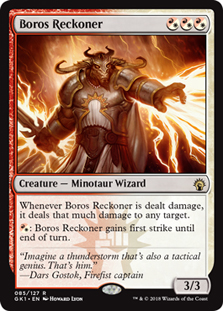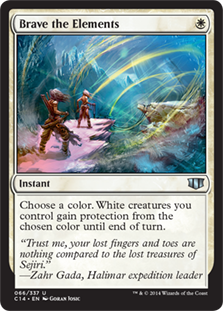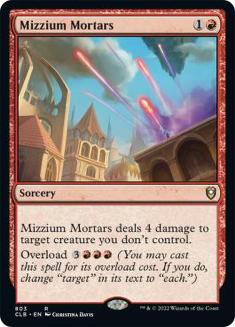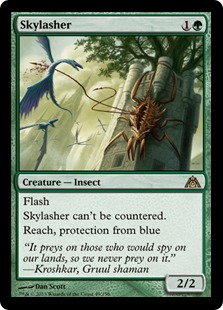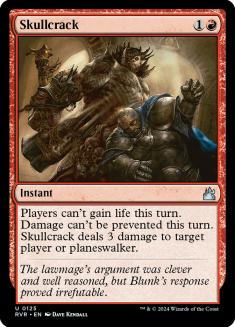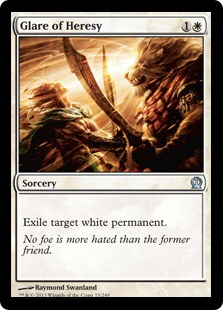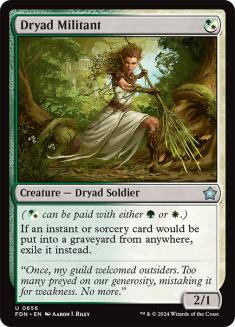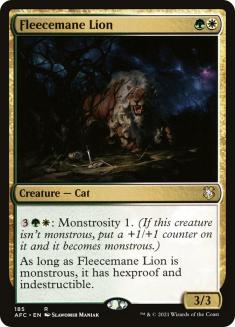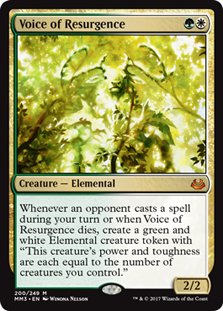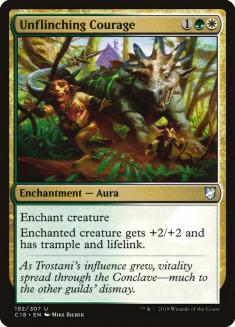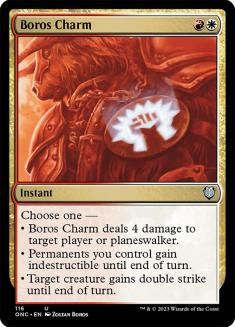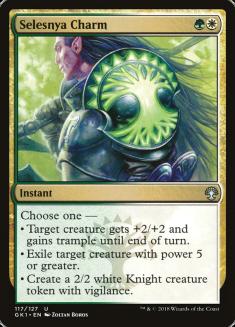The StarCityGames.com Invitational comes to Charlotte this weekend, and I won’t be competing in it. I’ll be in attendance, sure, but I’ll be on the sidelines, bringing you guys deck techs and feature match write ups as a member of the SCGLive crew. Invitationals are some my favorite tournaments, and I’ll be the first to admit that I’m going to miss getting the chance to play in them.
With my new coverage responsibilities, time to grind Daily Events on Magic Online has been in short supply. I’ve taken the opportunities I’ve had to play some two-man and eight-man events, though, and I’m just as confident as ever in the Naya Aggro deck I played a few weeks back to a Top 4 PTQ finish. If I were going to play in the invitational, this is the 75 I would be registering.
Creatures (23)
- 4 Dryad Militant
- 3 Loxodon Smiter
- 4 Ghor-Clan Rampager
- 4 Boros Reckoner
- 4 Voice of Resurgence
- 4 Fleecemane Lion
Lands (21)
Spells (16)
Sideboard

This deck was some brand-new spice when I first picked it up, and I assumed it was going to pick up steam and become a more common part of the Standard metagame. After attending the Standard Opens in Seattle and Los Angeles, it appears that for the most part this strategy’s metagame equity is being eaten up by Naya Hexproof. From my time spent earlier this season playing G/W Aggro, I have plenty of experience overcoming opposing removal spells, so I don’t particularly feel the need to adjust my threat base in that regard and continue to be impressed by Brave the Elements in this format.
I got a few messages when I shared this deck two weeks ago asking how to sideboard with it. I don’t normally go for sideboarding guides, as I think leaning on them very much puts blinders on you that limit your ability to think critically about a given matchup. So take any in and out suggestions with a grain of salt and always be asking yourself how you want to position yourself in post-board games.
U/W/x Control
Out:
In:
I can tell that this matchup is certainly losable, but I haven’t actually lost it yet. Because of this deck’s nine Temples and higher than average curve, it doesn’t naturally tend to play into Supreme Verdict as much as other beatdown decks. Generally there is a flash point on exactly turn 4 where you want to consider passing the turn and holding back rather than developing your board, but past that point it’s actually pretty important to be jamming a new threat every turn if you have it.
You want to be tying up their mana every turn by playing things that demand answers rather than ever letting them sink all their mana into a Sphinx’s Revelation. Supplementing Boros Charm with Skullcrack post-board turns your deck into a proto-burn deck, so you shouldn’t be afraid to blow Ghor-Clan Rampager and Selesnya Charm for damage at the first opportunity.
Mono-Black Devotion
Out:
In:
I always liked the Mono-Black Devotion matchup as a G/W Aggro player, and it’s even easier once we gain access to Brave the Elements and Ghor-Clan Rampager. All you have to do to win this matchup is to keep attacking. They will present various blockers, but we are more than equipped to push through them with combat tricks. The extra removal simply contributes to the game plan in this regard.
Mono-Blue Devotion
Out:
In:
This is almost certainly the deck’s toughest matchup like it was for G/W Aggro before. With G/W you were pretty much never beating a turn 4 Master of Waves unless you had removal for it, but Brave the Elements and the Ghor-Clan Rampager + Boros Charm package give this deck a long-range capacity that allows it to steal wins by going over Master of Waves rather than actually contesting it. In sideboarded games you’re basically just removing clunkers that can’t meaningfully attack into Mono-Blue’s blockers and replacing them with an additional long-range package in the form of protection from blue + Armadillo Cloak.
G/R/x Monsters
Out:
In:
Another matchup that I’d be happy to see every round. We’re basically the deck that G/R Monsters was conceptualized to be—just animals and aggression without all the bloat that comes from filling your deck with mana accelerants and clunky three-drop value generators. As such, you’re the better deck, and you merely need to reinforce that advantage, removing the copies of Dryad Militant that trade with Elvish Mystic and consistently get brick walled by Sylvan Caryatid and Courser of Kruphix and replacing them with some additional ways to push through those cards.
R/W Burn
Out:
In:
This one is fairly straightforward. Unflinching Courage gains life, and Shock sort of does too by serving as an instant speed answer to Chandra’s Phoenix. The cards being removed do not clock our opponent in a significant way. This matchup is first and foremost a race, but we can turn it from a race into a blowout by carefully managing Unflinching Courage. Try to wait until you can protect your target with Brave the Elements or Boros Charm before casting an Unflinching Courage, but recognize that you don’t always have the luxury of time.
I’d be perfectly content playing Naya Aggro in Standard, but what about Legacy? While I haven’t had any opportunities to play Legacy myself in the last month or so, I was given a front row seat last weekend to watch Jacob Kory pilot my baby to the finals in Los Angeles.
Creatures (14)
Lands (14)
Spells (32)

I really like Jacob’s list, and I’m pretty sure I wouldn’t change a thing. The Lava Spike package was originally pioneered by Andrew Schneider as a way to sidestep Tarmogoyf and Nimble Mongoose in RUG Delver, but it finds an even better application in today’s Legacy. You’ll note that this last has no way to answer True-Name Nemesis, but that’s because it doesn’t need one. The plan against a resolved True-Name Nemesis is to ignore it and throw fire in its controller’s face. The stock of Price of Progress is on the rise as well with the last two Legacy Opens being won by BUG decks playing zero basic lands.
Aside from the pure unadulterated joy of getting to see the wonder duo of Goblin Guide and Delver of Secrets back in the saddle, I spotted a few other interesting things during my weekend in the City of Angels.
- My survey of 5-0 Standard players in Los Angeles revealed a slightly more consolidated field than the previous week in Seattle, where thirteen archetypes were represented among fifteen players. In LA the 5-0 decks included: 4 black devotion (3 Mono-Black, 1 B/W) 3 Mono-Blue Devotion, 3 control (2 Esper, 1 UW), 2 Monsters (1 Jund, 1 G/R), 2 R/W Burn, 2 Esper Midrange, 1 Mono-Red Aggro, 1 RUG Devotion.
- Yes, there was a Prime Speaker Zegana deck that started 5-0. RUG Devotion in the hands of Alan Mai actually started 7-0 before the wheels fell off. I’m certainly willing to believe it’s a real direction to take green in this format, and you’d better believe I’ll be taking this deck out for a spin myself at some point.
- There were two Esper Midrange decks at the top tables in round 6, but none of them appeared in the Top 16. This was also true in Seattle as well as at the last Standard Open I actually competed at in Nashville. It’s entirely possible that Esper Midrange is a big favorite against the decks of the early rounds but a dog at the top tables. This has actually always been my experience with "threats, discard, and removal" midrange decks for as long as I can remember. The traditional Rock archetype has always lacked cohesion, essentially aspiring to bring the most insane Sealed Deck possible to a Constructed tournament. The right pile of powerful cards may be 60% against the field, but without a clearer tactical focus, this is still a recipe for a mediocre 6-4 finish.
- It takes some crafty taxonomy to get the Legacy field to look homogenous. The mid-tournament survey of the top tables in the Legacy Open revealed fourteen archetypes amongst nineteen players, but they can be grouped together further to reveal a tally of: 5 Jund, 4 Delver (2 U/W/R, 1 U/R, 1 BUG), 3 Stoneforge (2 Death and Taxes, 1 Deathblade), 1 Merfolk, and 7 miscellaneous combo decks (1 Sneak and Show, 1 Reanimator, 1 Belcher, 1 Mono-Green 12Post, 1 Burn, 1 Manaless Dredge, and 1 Dredge).
- Notably missing from the 4-0 metagame is any kind of proper control deck. As I discussed last week, these decks have a tendency to pick up unintentional draws and cannibalize themselves, so one can only assume that decks like Miracles, U/W/R Thopter, and BUG Walkers were hiding out in the 3-0-1 bracket if they were succeeding at all.
- The dialogue about dominant Legacy decks always seems to focus on whatever Brainstorm deck is posting top finishes. Two summers ago it was Miracles, last summer it was Sneak and Show, and it appears that for now we’re on True-Name Nemesis and as a response Delver of Secrets. In that context it’s pretty jarring to see Jund representing 26% of the 4-0 metagame. 26% would be a lot even for a Standard deck, but in Legacy it is almost unheard of for one deck to have that much of a presence.
- In somewhat of a recurring trend, however, Jund couldn’t close, as zero of the five Jund pilots who started strong survived to make the Top 8. Once again I suspect that midrange creatures and removal is a fine choice in the wide-open field of round 1 but is less reliable against the more focused and fine-tuned opposition you might expect to see in rounds 6 or 7. Legacy Jund gets a bit of a shot in the arm because its disruption is so broad—Thoughtseize and Hymn to Tourach are good against opponents with cards in their hand (i.e. everyone), Lightning Bolt is a clock when it’s not a one-mana removal spell, and Abrupt Decay has something to kill against almost everyone. Even still, for this particular tournament the top tables were especially predatory for Jund, with two Belcher decks in the Top 16 along with a comically varied selection of other combo decks.
If I have to sum up everything I learned last weekend into one Invitational-winning kernel of advice, it would be this: find something proactive to do and learn to do it well. Remember that the Invitational is comprised of both Standard grinders who only play Legacy a handful of times a year and Legacy ringers who are out of their element in the Standard rounds. Because of this, predicting the field is always trickier than normal, and unless you’re already extremely confident in your ability to navigate a control deck through an unknown field, I’d caution against bringing a reactive strategy to Charlotte. Someone will certainly succeed at the Invitational with Esper or Miracles, but at this point you ought to already know if that person could be you.
One thing I know for sure is that from my perspective as a newly minted member of the American Railbird Association, this is going to be an exciting weekend! There will be haymakers thrown left and right by some of the titans of the Open Series, so be sure to check out the action on the SCGLive broadcast if you’re not able to make it to Charlotte yourself!


